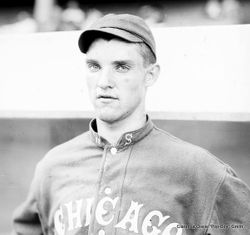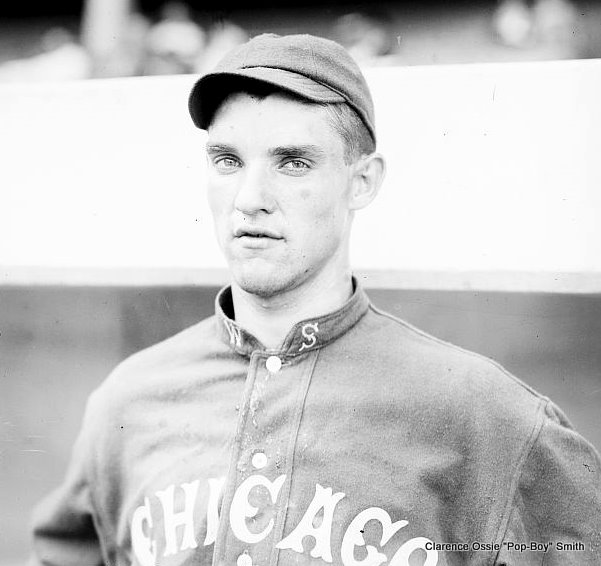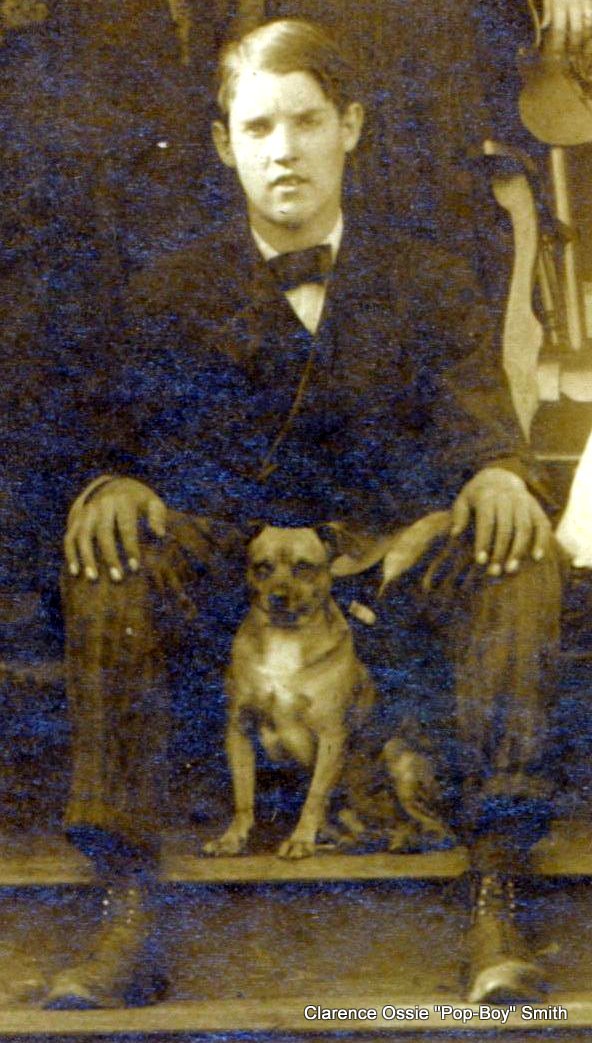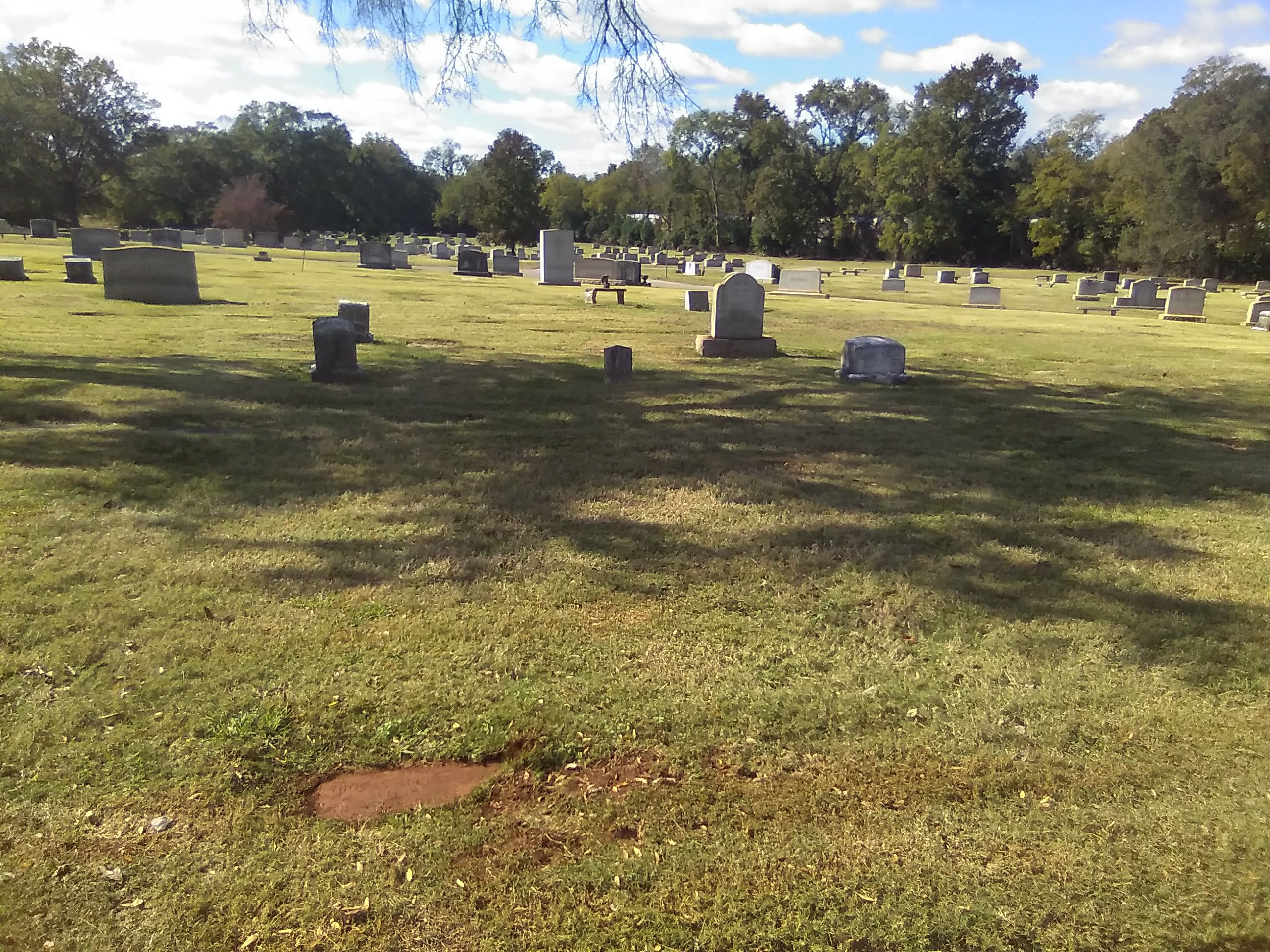Clarence was always a baseball fan, and he took a job selling sodas in the bleachers of the then-new stadium in Birmingham just to see the games. Such workers were called "Pop Boys" in that era, a nickname that would stick with him. During practices, he sometimes pitched to the players, and he was quickly noticed and signed in 1911.
He was called to the majors in 1913 with the Chicago White Sox. Clarence's performance for the White Sox was respectable, but he got little playing time, being the youngest of 13 pitchers on the staff that year.
Despite Clarence's performance, Charles Comiskey was unhappy with his entire relief pitcher staff and began paring it down. Clarence survived longer than most of the staff, but he was sent back to the minors before the beginning of the 1914 season.
Clarence ended up with the New Orleans Pelicans and was a sensation in the minor leagues, so much so that he was sold back into the majors late in the 1916 season, playing with the Cleveland Indians. Being one of 17 pitchers on the staff, he pitched little that season.
Early in the 1917 season, despite his incredible record in the minors, Clarence apparently began to lose his arm, a common occurrence in an era when pitchers were severely overworked; he was placed on probation in March. Clarence played a few more games, but played his last major league game on May 2, 1917, oddly enough against his first team, the White Sox, and was sent back to the minors.
He coached minor league teams but died at the age of 31 at his home in Sweetwater, Texas, of complications of pulmonary tuberculosis, leaving a widow and four-year-old daughter.
Clarence was closely related to two other Major League Baseball players: Jim Bagby, Sr. was his brother-in-law, and Jim Bagby, Jr. his nephew.
Clarence was always a baseball fan, and he took a job selling sodas in the bleachers of the then-new stadium in Birmingham just to see the games. Such workers were called "Pop Boys" in that era, a nickname that would stick with him. During practices, he sometimes pitched to the players, and he was quickly noticed and signed in 1911.
He was called to the majors in 1913 with the Chicago White Sox. Clarence's performance for the White Sox was respectable, but he got little playing time, being the youngest of 13 pitchers on the staff that year.
Despite Clarence's performance, Charles Comiskey was unhappy with his entire relief pitcher staff and began paring it down. Clarence survived longer than most of the staff, but he was sent back to the minors before the beginning of the 1914 season.
Clarence ended up with the New Orleans Pelicans and was a sensation in the minor leagues, so much so that he was sold back into the majors late in the 1916 season, playing with the Cleveland Indians. Being one of 17 pitchers on the staff, he pitched little that season.
Early in the 1917 season, despite his incredible record in the minors, Clarence apparently began to lose his arm, a common occurrence in an era when pitchers were severely overworked; he was placed on probation in March. Clarence played a few more games, but played his last major league game on May 2, 1917, oddly enough against his first team, the White Sox, and was sent back to the minors.
He coached minor league teams but died at the age of 31 at his home in Sweetwater, Texas, of complications of pulmonary tuberculosis, leaving a widow and four-year-old daughter.
Clarence was closely related to two other Major League Baseball players: Jim Bagby, Sr. was his brother-in-law, and Jim Bagby, Jr. his nephew.
Gravesite Details
Clarence has no marker
Family Members
Sponsored by Ancestry
Advertisement
Explore more
Sponsored by Ancestry
Advertisement












